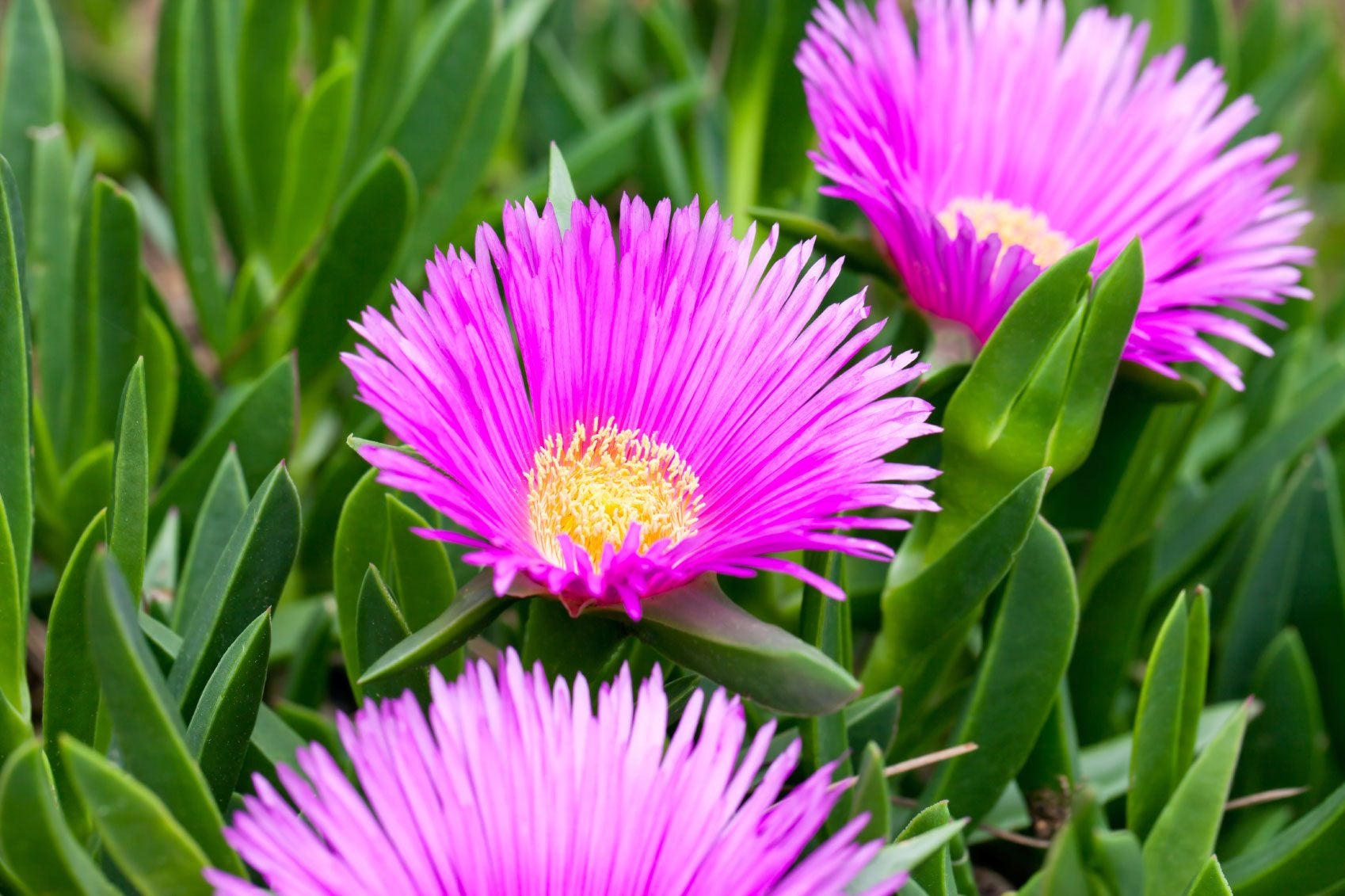How To Grow An Ice Plant And Purple Ice Plant Care


Looking for a drought tolerant but lovely flower to fill in a troublesome dry area in your garden? You may want to try planting ice plants. Ice plant flowers add a bright splash of color to the drier parts of your garden and ice plant care is easy. Keep reading to learn more about these pretty plants and how to grow an ice plant in your garden.
Information About the Hardy Ice Plant
The hardy ice plant (Delosperma) is a succulent, perennial groundcover with daisy-like flowers. The ice plant is not called an ice plant because it is cold hardy, but rather because the flowers and leaves seem to shimmer as though covered in frost or ice crystals.
The plants grow to be about 3 to 6 inches (8-15 cm.) tall and 2 to 4 feet (61 cm. to 1 m.) wide. Ice plant flowers grow in USDA plant hardiness zones 5 through 9 and will bloom for most of the summer and fall. Their foliage is mostly evergreen, and, because of this, they make a great year-round groundcover.
While the plant is evergreen, it will often have some dieback of foliage in the winter. Some popular varieties of ice plants include:
- Cooper's ice plant (Delosperma cooperi) - This purple ice plant is the most common variety
- Hardy yellow (Delosperma brunnthaleri) - This species consists of lovely yellow flowers
- Starburst (Delosperma floribundum) - An ice plant variety with pink flowers and a white center
- Hardy white (Delosperma herbeau) - A white flowered type that offers exceptional beauty
How to Grow an Ice Plant
Ice plants prefer full sun but can tolerate some light shade in the garden. Since ice plants are succulents, they do not tolerate wet soil, though they do well in poor soils. In fact, wet soil, especially during the winter months, is likely to kill the plants. In areas where the soil stays consistently dry, this plant can become invasive, so it is best to take this into consideration when planting it.
The ice plant can be propagated by division, cuttings, or seeds. If propagating by division, it is best to divide the plants in the spring. Cuttings can be taken anytime in the spring, summer, or fall. When grown by seeds, scatter the seeds on the surface of the soil and do not cover them, as they need light to germinate.
Ice Plant Care
Once they are established, ice plants require little maintenance. As succulents, they need very little watering and thrive in drought-like conditions. In addition, these plants need little to no fertilizing. Simply plant your ice plant flowers and watch them grow!
Sign up for the Gardening Know How newsletter today and receive a free copy of our e-book "How to Grow Delicious Tomatoes".

Heather Rhoades founded Gardening Know How in 2007. She holds degrees from Cleveland State University and Northern Kentucky University. She is an avid gardener with a passion for community, and is a recipient of the Master Gardeners of Ohio Lifetime Achievement Award.